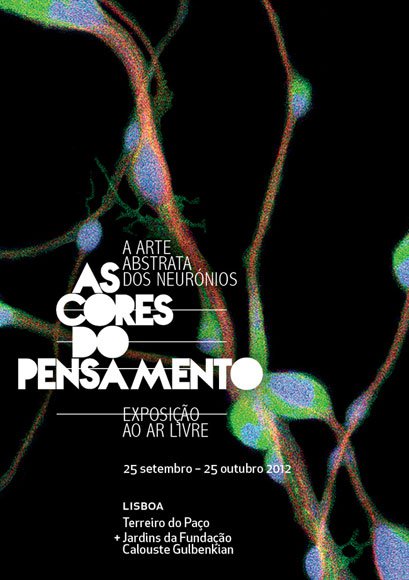The Colours of Thought – exhibition Catalogue

The catalogue reproduces the 58 combined art and science pictures that were open-air exhibited in Lisbon (Praça do Comércio and Calouste Gulbenkian Foundation Garden) under the topic of "The abstract art of the neurons" .
Designed by Viviane Kasam and Angelo Bucarelli, The Colours of Thought – the abstract art of neurons exhibition was first held in 2011, in Milan, and through Yoram Cohen, Clara Sitruk and Delphine Chan, the exhibition has been recreated for 2012 displays in Paris, Deauville, Monaco and Lisbon.
The exhibition was held in the Foundation’s gardens on September/October 2012 and was simultaneously presented, in a broader scale, at the city’s central square Terreiro do Paço. This initiative resulted from a partnership between the Calouste Gulbenkian Foundation, the Hebrew University of Jerusalem, through the Edmond & Lily Safra Centre for Brain Sciences and the Lisbon Municipal Council.
In some indefinable way, each and every work of art projects talent, technique, memories and personal experiences that interweave to form a very complex network of cellular relations that are organised into the various cerebral functions.
The human brain’s capacity for multi-sensorial integration derives from the immense development in the connectivity commanding distinct functions even closely mutually interconnected by strands of nervous fibres.
In order to research this connectivity, modern science has developed highly sophisticated technologies such as the Brainbow method, or the brain-rainbow, which enables recognition of grey cells and the white fibres of the brain as if some myriad of fluorescent colours. On the other hand, the Connectomics approach distinguishes between the mutually interconnected neurons to produce a fascinating map of synaptic affinities, visualised across three dimensions.
Researchers in the neuroscience field utilise the vibrant, living colours of these representations created out of images that would otherwise have seem to have drawn “their inspiration” from renowned works of art. Hence, they come presented alongside each other as if representing the genuine abstract art of the neurons.
Technical information
- Edited:
- 2012
